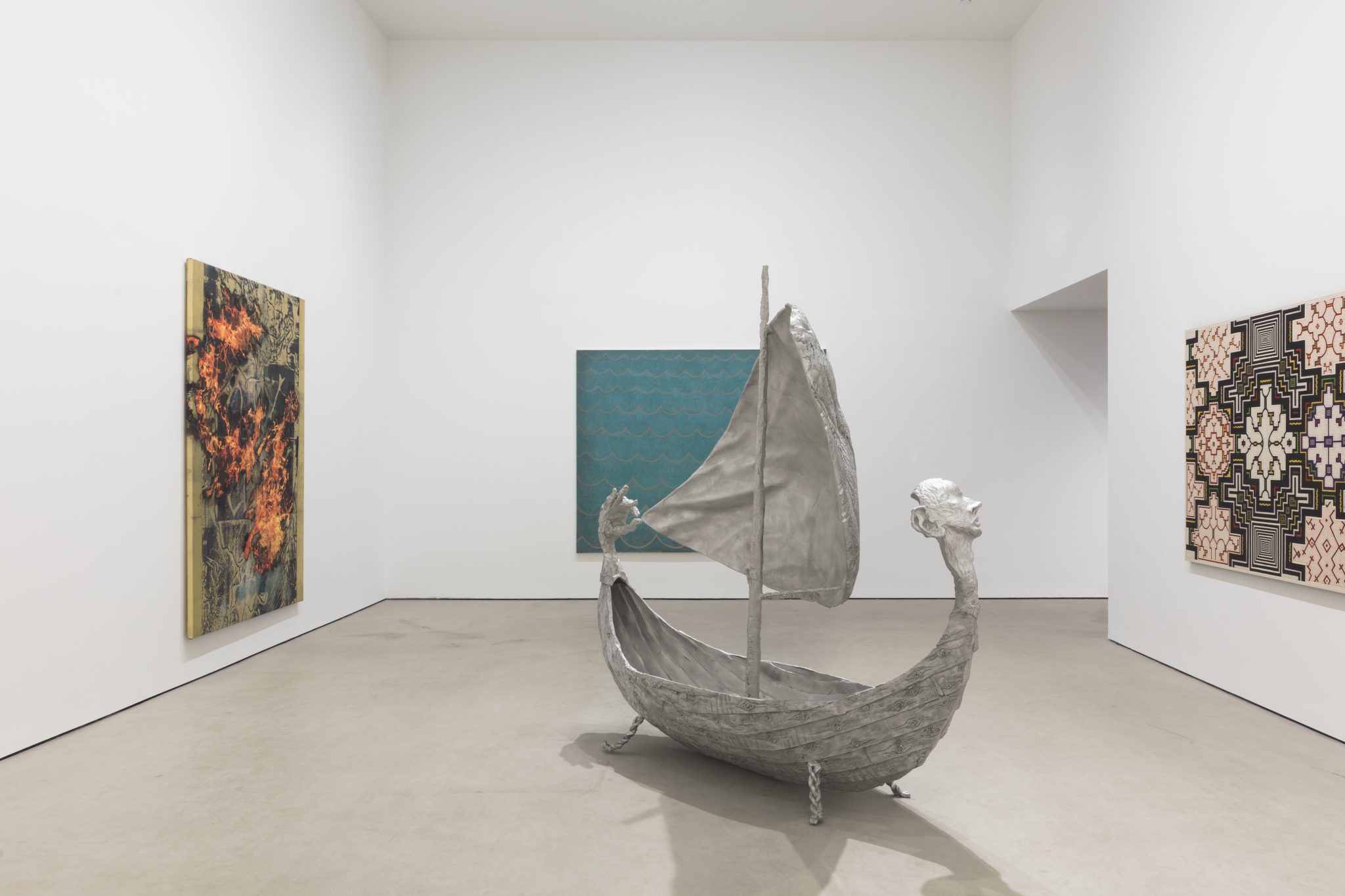The inaugural exhibition at the vast new Bowery space retains the gallery’s DIY roots and sense of play across multiple generations of artists
Clearing’s recent move to the Bowery in Manhattan recalls the gallery’s salad days: in 2011, then-artist Olivier Babin cleared out his scrappy Bushwick studio to make room for a show between friends Harold Ancart and Jacob Kassay. The artist-run space would go on to host a series of arcane, offbeat exhibitions approximate to a kind of deinstallation art, featuring work by Aaron Aujla, Kilian Rüthemann and Marc Camille Chaimowicz. Artist interventions resembling the handiwork of eccentric contractors – excavated drywall, unfastened hardware, temporary lighting fixtures and even an interior, windowed wall fabricated to stand in front of existing structural walls – positioned the gallery as a construction site unconcerned with pardoning its dust.
Over two decades later, the dust has settled, but the gallery continues to rebuild itself. With locations in Brussels since 2012 and Los Angeles since 2020, Babin’s at times peripatetic programme has expanded into a major international enterprise admired for its ongoing commitment to emerging artists. Maiden Voyage, the first show in its new 613sqm location, marks a considerable departure from the gallery’s storied Brooklyn outpost, the sprawling former truck depot that it has occupied since 2014. That transition from renegade DIY space to polished Bushwick white cube allowed Babin’s artists to grow and experiment at a larger scale, the gallery becoming known for its kunsthalle-like exhibitions featuring monumental installations and videos, such as Zak Kitnick’s cat and dog parade of printed industrial panels in C&D (2016), Calvin Marcus’s graphic narrative formed by side-by-side paintings in WERE GOOD MEN (2016) and performance and video works by Meriem Bennani and Lili Reynaud-Dewar.
The new Bowery location reins things in. Intimately sized rooms split across three levels now shape the parameters of artistic agency: how do you make a big artist work small while encouraging a young artist to think big? The 24-artist presentation isn’t an exhibition of new work so much as the exhibition of a new space, pondering how the legacy of the gallery will fit into this new mould, the exhibition’s title evoking a first journey into the unknown. Upstairs, simultaneous screenings of Bennani’s Guided Tour of a Spill (CAPS Interlude) (2021) and Reynaud-Dewar’s Oops, I think I may have lost my lighter somewhere on the ground… Could someone please be so kind to come here and help me find it? (2019) pay tribute to the old space and its championing of off-centre video art, while suggesting that new media doesn’t need a big space or surrounding installation to leave a mark. The new galleries will still accommodate large canvases and big sculpture, but Babin seems to realise that upending his way of presenting work remains critical for the gallery’s growth – these cosier rooms may push some out of their comfort zone.

Nevertheless, as it harks back to past exhibitions, the show resembles a rollcall of gallery artists. Alongside Ancart and Kitnick, Koenraad Dedobbeleer, Ryan Foerster, Sebastian Black and Loïc Raguénès represent a now-mature generation of artists, in their late thirties and forties, who first showed with Babin in 2011. Idioms honed across painting and sculpture – see Raguénès’s waves and Black’s colourful abstractions – may be familiar, but they gesture to a longer history of experimentation encouraged by Babin.
Alongside this ‘old guard’, Babin cultivates fresh talent, showing work by younger artists such as Adam Alessi, Matt Copson, Javier Barrios and Daisy Sheff, much of it surrealist figurative painting, running counter to the gallery’s early conceptual programme. Nevertheless, paintings such as Alessi’s piercing blue portrait of an androgynous muse and Barrios’s unnerving image of figures caught in a spider’s web maintain Babin’s commitment to challenging and even unpalatable work. New also doesn’t necessarily mean younger: Peruvian artist Sara Flores, in her early seventies, debuted with a solo show in fall 2022 and here presents a vegetal dye kené canvas (kené being an Indigenous textile design practice of Peruvian women). Laced with subtle imperfections – a misplaced mark or the bleed of dye – her staggeringly meticulous composition resembling a tiled floor surpasses mere repetition. These inky faults recall the ethos of ageing gracefully, every wrinkle personifying the endearing contours of a life lived without trepidation.
The selection – informed in part by ageing artists who have developed more market-friendly offerings – doesn’t detract from Clearing’s strikingly cohesive programme, with intergenerational parallels appearing between the earthy ornament of artist duo Daniel Dewar and Grégory Gicquel’s cushioned benches and Hugh Hayden’s carved wood rib cages. Beyond formal similarities, one guesses that all these artists are still having fun, the work on view delightfully weird but not overly edgy or trendy. From fake flowers, globs of blown-glass bubble gum and miniature train tracks, pure play pervades this space – a buoyant sense that each of these artists is still emerging, attending a localised patch suited for roaming, pausing and igniting a fire when a youthful vision catches.
Maiden Voyage at Clearing, New York, 26 April – 21 May
